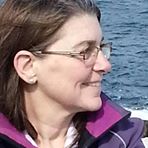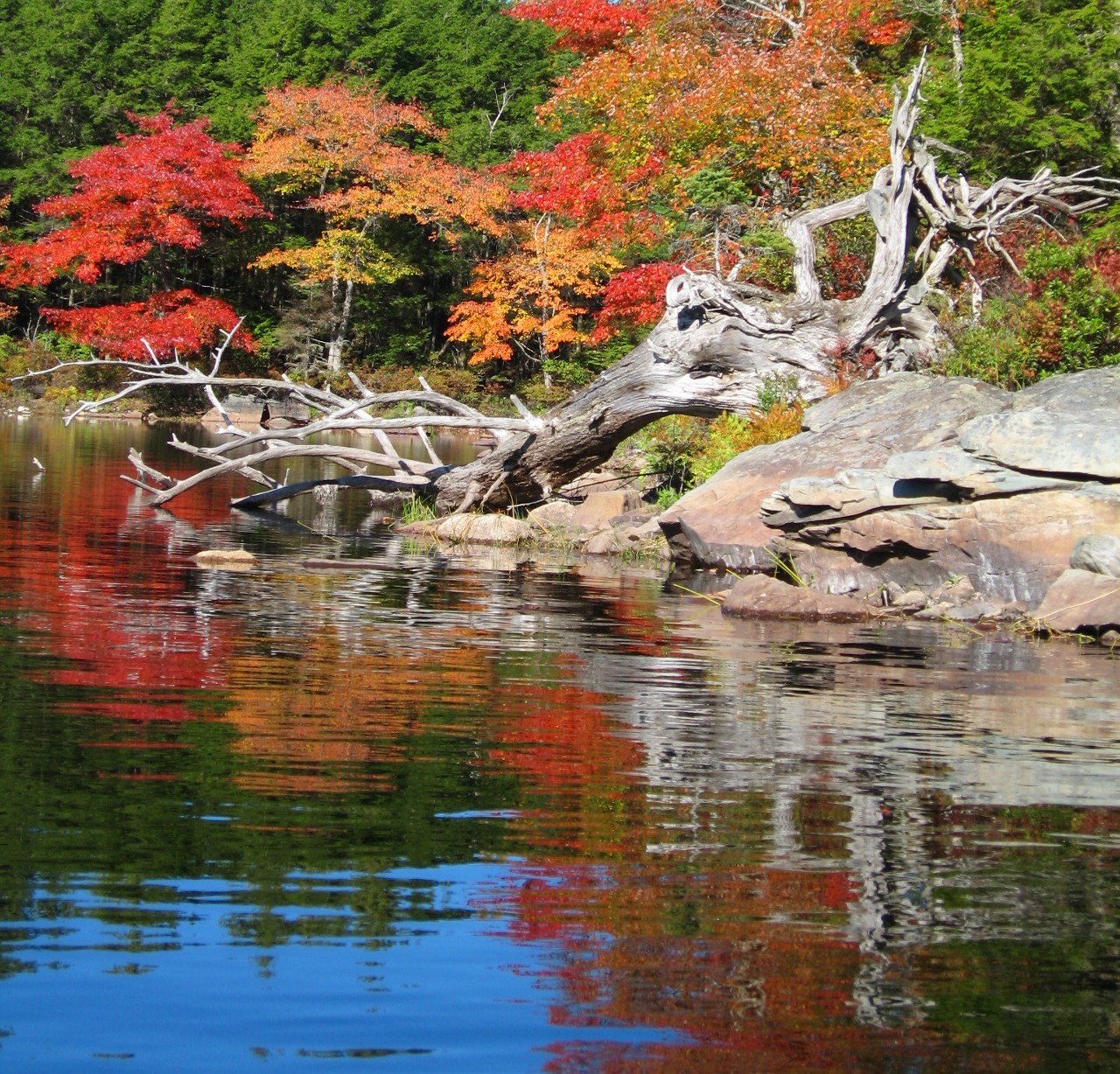Julie Laroche
 |
PROFESSOR BSc (McGill) PhD (Dalhousie University) |
||
Discovering the diversity, function and resilience of the ocean microbiome What is the ocean microbiome? From an evolutionary or an ecological point of view, the earth is a microbial planet. Throughout geological times, and still today, microbes have shaped the earth’s atmosphere and carried out the metabolic waste recycling necessary to support all other forms of life. The importance of microbes is undeniable: There are approximately 5 X 1030 microbial cells on earth comprising an estimated 100 million species. Far more variable biochemically and genetically than animals and plants, microbes comprise most of the biodiversity on earth. Although ‘microbiome’ originally referred to the microbial communities that populate the human body, the term has gained acceptance to describe the collections of microbes or the microbial communities that populate any environment. Well entrenched in the term microbiome is the implication that the whole is bigger than the sum of its parts, that is, microbiomes are dynamic entities or a super-organisms whose members depend on and affect each other. Examples of specific ocean microbiomes range from the bacterial community in a fish gut to spring bloom microbial communities composed of everything from phytoplankton or tiny unicellular algae, grazers, bacteria, down to the viruses that infect them. Members of these communities act in concert to transform, metabolize and recycle simple and complex molecules with feedback on ecosystem functions and services. Microbes make up 70-90% of the biomass in the ocean, yet only <1% of ocean’s microbes can be brought into culture. This has prevented us from fully grasping their importance until very recently. The advent of genomics and next generation sequencing (NGS) techniques in the last 10 years have provided an unprecedented opportunity to understand and harness the potential of ocean microbes. To a large extent genomics is the new lens through which we are seeing and discovering the nature and function of microbial communities. Each year since the advent of NGS, new taxonomic groups and novel biochemical pathways have been discovered in the ocean microbiome. |
|||
Selected Publications (Last 5 years; complete list at Google Scholar)
Kopf A, Bicak M, Kottmann R, Schnetzer J, Kostadinov I, Lehmann K, ...(157 authors) 2015. The ocean sampling day consortium. GigaScience 4 (1), 1-5 Langlois R, Großkopf T, Mills M, Takeda S, LaRoche J. 2015. Widespread Distribution and Expression of Gamma A (UMB), an Uncultured, Diazotrophic, γ-Proteobacterial nifH Phylotype. PLoS One DOI: 10.1371/journal.pone.0128912 Ratten JM, LaRoche J, Desai DK, Shelley RU, Landing WM, Boyle E, Cutter GA, Langlois RJ. 2015. Sources of iron and phosphate affect the distribution of diazotrophs in the North Atlantic. Deep Sea Research Part II: Topical Studies in Oceanography 116: 332-341. Wallace DW, de Young B, Iverson S, LaRoche J, Whoriskey F, Lewis M, ... Rae A. 2014. A Canadian contribution to an integrated Atlantic ocean observing system (IAOOS). In Oceans-St. John's, (pp. 1-10). IEEE. Krupke A, Mohr W, LaRoche J, Fuchs BM, Amann RI, Kuypers MM. 2014. The effect of nutrients on carbon and nitrogen fixation by the UCYN-A–haptophyte symbiosis. The ISME journal. Perner M, Gonnella G, Kurtz S, LaRoche J. 2014. Handling temperature bursts reaching 464° C: different microbial strategies in the Sisters Peak hydrothermal chimney. Appl.Environ. Microbiol, AEM. 01460-141. Loescher CR, Großkopf T, Desai FD, Gill D, Schunck H, Croot PL, Schlosser C, Neulinger S, Pinnow N, Lavik G, Kuypers MMM, LaRoche J and Schmit RA. 2014. Facets of diazotrophy in the oxygen minimum zone waters off Peru. doi:10.1038/ismej.2014.71 Krupke A, Musat N, Laroche J, Mohr W, Fuchs BM, Amann RI, Kuypers MM, Foster RA. 2013. In situ identification and N₂ and C fixation rates of uncultivated cyanobacteria populations. Syst Appl Microbiol. 36(4):259-71. doi: 10.1016/j.syapm.2013.02.002. Moore CM, Mills MM, Arrigo KR, Berman-Frank I, Bopp L, Boyd PW, Galbraith ED, Geider RJ, Guieu C, Jaccard SL, Jickells TD, LaRoche J, Lenton TM, Mahowald NM, Marañón E, Marinov I, Moore JK, Nakatsuka T, Oschlies A, Saito MA, Thingstad TF, Tsuda A, Ulloa O. 2013. Processes and patterns of oceanic nutrient limitation. Nature Geoscience, DOI: 10.1038/NGEO1765 Mohr W, Vagner T, Kuypers MMM, Ackermann M, LaRoche J. 2013. Resolution of Conflicting Signals at the Single-Cell Level in the Regulation of Cyanobacterial Photosynthesis and Nitrogen Fixation. Plos One 8(6). Desai DK, Schunck H, Loeser JW, LaRoche J. 2013. Fragment recruitment on metabolic pathways: comparative metabolic profiling of metagenomes and metatranscriptomes. Bioinformatics 29(6): 790-791. Roy A-S, Gibbons SM, Schunck H, Owens S, Caporaso JG, Sperling M, Nissimov JI, Romac S, Bittner L, Muehling M, Riebesell U, LaRoche J, Gilbert JA. 2013. Ocean acidification shows negligible impacts on high-latitude bacterial community structure in coastal pelagic mesocosms. Biogeosciences 10(1): 555-566. Schunck H, Lavik G, Desai DK, GroSSkopf T, Kalvelage T, Loscher CR, Paulmier A, Contreras S, Siegel H, Holtappels M, Rosenstiel P, Schilhabel MB, Graco M, Schmitz RA, Kuypers MMM, Laroche J. 2013. Giant Hydrogen Sulfide Plume in the Oxygen Minimum Zone off Peru Supports Chemolithoautotrophy. PloS one 8(8): e68661. Desai DK, Desai FD, LaRoche J. 2012. Factors influencing the diversity of iron uptake systems in aquatic microorganisms. Front. Microbio. 3:362. doi: 10.3389/fmicb.2012.00362 Großkopf T, Mohr W, Baustian T, Schunck H, Gill1 D, Kuypers MMK, Lavik G, Schmitz RA, Wallace DWR, LaRoche J. 2012. Doubling of marine dinitrogen-fixation rates based on direct measurements. Nature 488, 361–364. doi:10.1038/nature11338 Großkopf T, LaRoche J. 2012. Direct and indirect costs of dinitrogen fixation in Crocosphaera watsonii WH8501 and possible implications for the nitrogen cycle. Front. Microbio. doi: 10.3389/fmicb.2012.00236 Lommer M, Specht M, Roy A-S, Kraemer L, Andreson R, Gutowska MA, Wolf J, Bergner SV, Schilhabel MB, Klostermeier UC, Beiko RG, Rosenstiel P, Hippler M, LaRoche J. 2012. Genome and low-iron response of an oceanic diatom adapted to chronic iron limitation. Genome Biology 13:R66 Halm H , Lam P, Ferdelman TG , Lavik G , Dittmar T, LaRoche J, D'Hondt S. 2012. Heterotrophic organisms dominate nitrogen fixation in the South Pacific Gyre. ISME JOURNAL Volume: 6 Issue: 6 Pages: 1238-1249 DOI: 10.1038/ismej.2011.182 Loescher CR, Kock A, Koenneke M, LaRoche J, Bange HW, Schmitz RA. 2011. Production of oceanic nitrous oxide by ammonia-oxidizing archaea. PLoS ONE Biogeosciences, 9, 2419–2429, 2012 doi:10.5194/bg-9-2419-2012 Mohr W, Großkopf T, Wallace DWR, LaRoche J. 2010. Methodological Underestimation of Oceanic Nitrogen Fixation Rates. PLoS ONE 5: e12583. doi:10.1371/journal.pone.0012583
|

 Teaching & Research
Teaching & Research